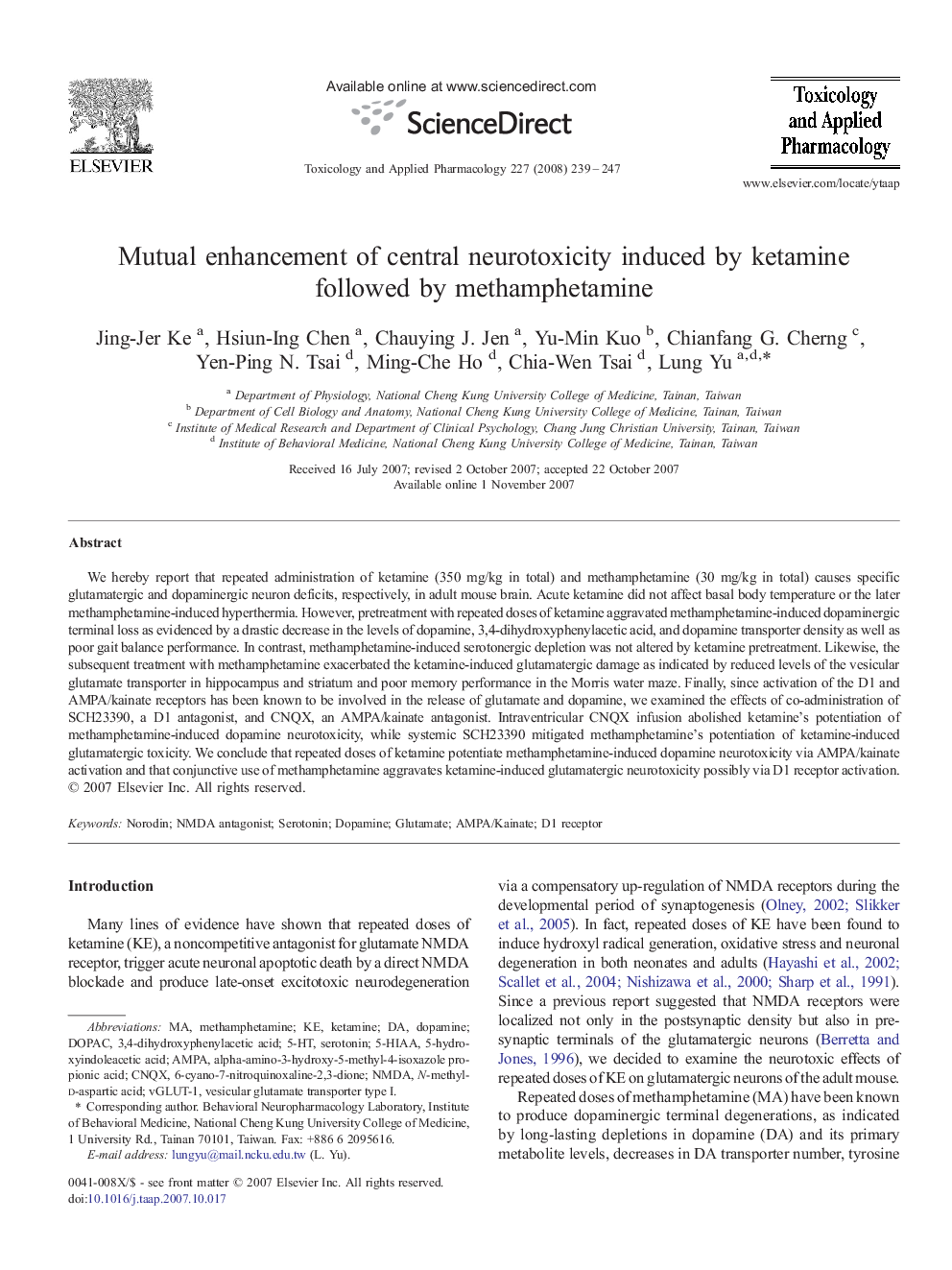| Article ID | Journal | Published Year | Pages | File Type |
|---|---|---|---|---|
| 2570543 | Toxicology and Applied Pharmacology | 2008 | 9 Pages |
We hereby report that repeated administration of ketamine (350 mg/kg in total) and methamphetamine (30 mg/kg in total) causes specific glutamatergic and dopaminergic neuron deficits, respectively, in adult mouse brain. Acute ketamine did not affect basal body temperature or the later methamphetamine-induced hyperthermia. However, pretreatment with repeated doses of ketamine aggravated methamphetamine-induced dopaminergic terminal loss as evidenced by a drastic decrease in the levels of dopamine, 3,4-dihydroxyphenylacetic acid, and dopamine transporter density as well as poor gait balance performance. In contrast, methamphetamine-induced serotonergic depletion was not altered by ketamine pretreatment. Likewise, the subsequent treatment with methamphetamine exacerbated the ketamine-induced glutamatergic damage as indicated by reduced levels of the vesicular glutamate transporter in hippocampus and striatum and poor memory performance in the Morris water maze. Finally, since activation of the D1 and AMPA/kainate receptors has been known to be involved in the release of glutamate and dopamine, we examined the effects of co-administration of SCH23390, a D1 antagonist, and CNQX, an AMPA/kainate antagonist. Intraventricular CNQX infusion abolished ketamine's potentiation of methamphetamine-induced dopamine neurotoxicity, while systemic SCH23390 mitigated methamphetamine's potentiation of ketamine-induced glutamatergic toxicity. We conclude that repeated doses of ketamine potentiate methamphetamine-induced dopamine neurotoxicity via AMPA/kainate activation and that conjunctive use of methamphetamine aggravates ketamine-induced glutamatergic neurotoxicity possibly via D1 receptor activation.
